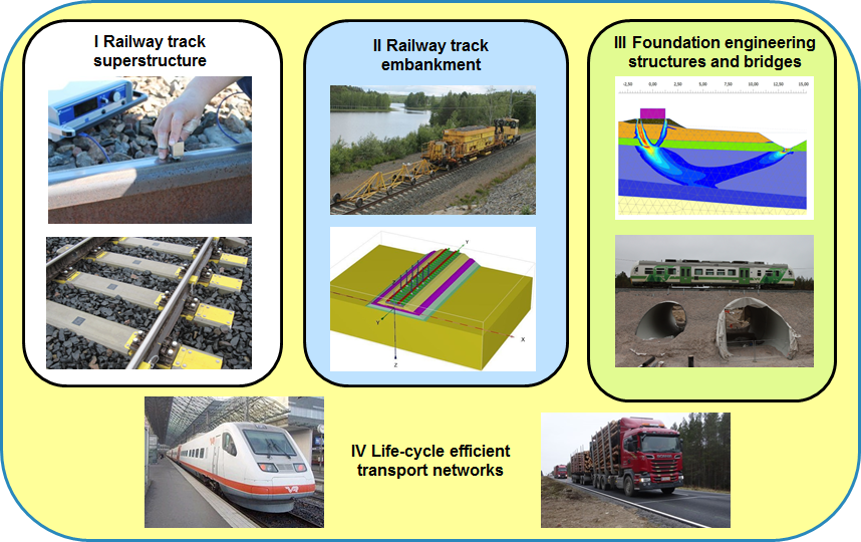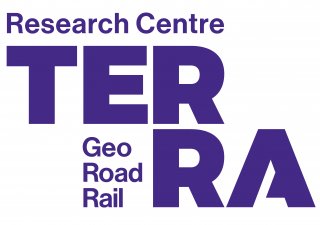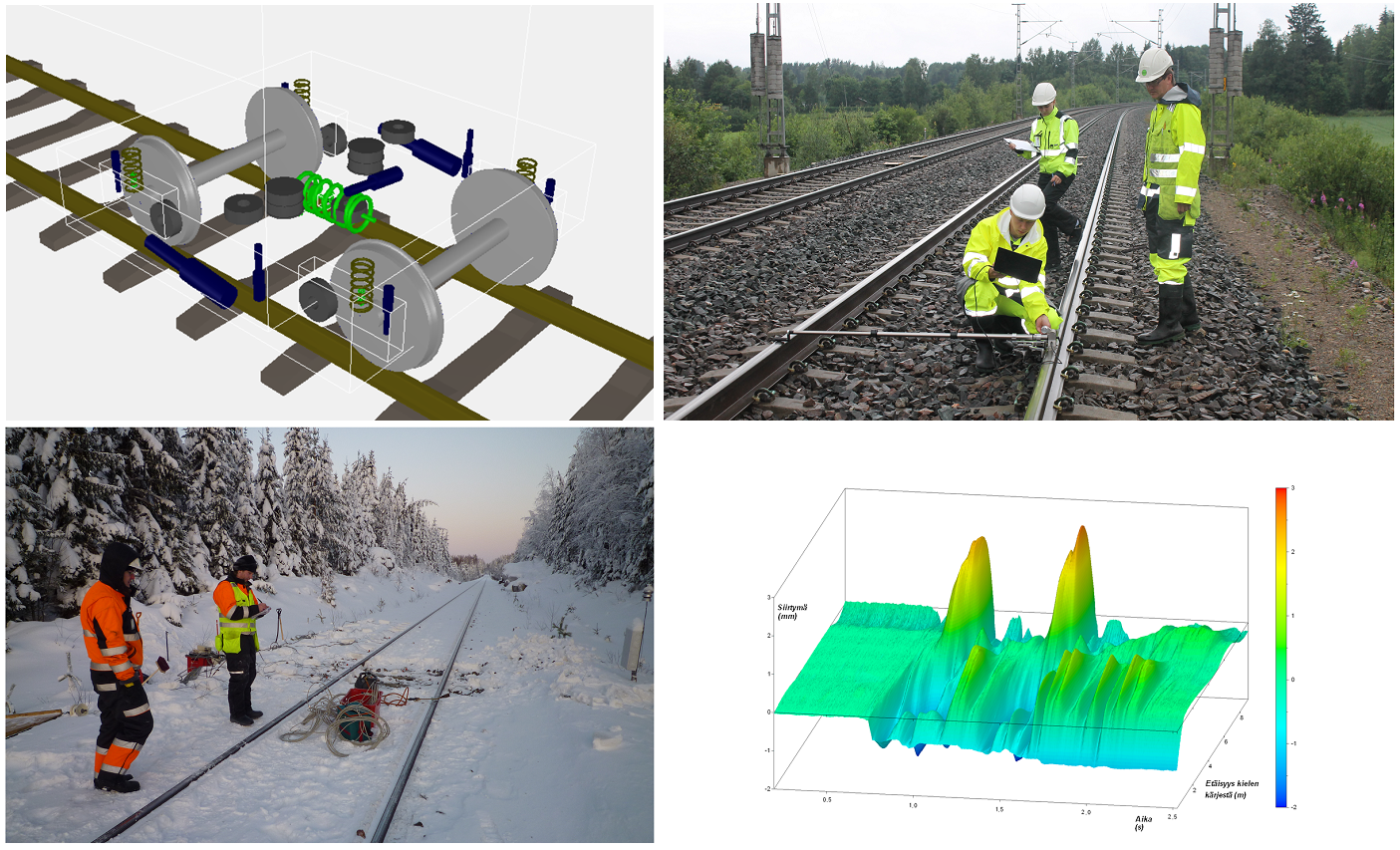The Railway Track Structures Research Team consists of about 10 researchers. The research area includes track components from subsoil stability through the structural layers to sleepers, rails and wheel-rail contact. Essential parts of the research area are also bridges and the life cycle and monitoring of track structures.
The main emphasis of activity is experimental research based on diverse arrangements from laboratory scale material analyses to field measurements and full-scale loading tests. Research methods are complemented by calculational analyses of performance of structures and literature reviews of international research results.
Research on track structures has long traditions at TUT.
ETEVÄ-collaboration
The railway research at TUT is mainly based on collaboration with Finnish Transport Infrastructure Agency. The parties have an agreement of research framework Life-cycle efficient maintenance of traffic infrastructures called ‘ETEVÄ’ for years 2017 – 2020. Figure 1 presents four topic areas of the ETEVÄ framework.

Figure 1. Topic areas of the ETEVÄ framework.
ETEVÄ-collaboration has launched the following research projects:
- The effect of rail side wear on train derailment risk and the convenience of train passengers
- Best tamping practices in turnout areas
- Monitoring the influence of heavy train loads on track
- Evaluating the functionality and effects of different track draining solutions in Finland
- Evaluating track load bearing capacity using data mining method
- EPSILON – Eurocode-based design system to guide the quality of infrastructure projects
- Robustness and structural safety of post-tensioned concrete bridge in case of tendon failure
Defective performance of any of the several components of the track structure may have wide-ranging financial as well as safety consequences. The primary aim of the Life Cycle Cost Efficient Track (TERA) programme in years 2009-2016 was to generate information in its research areas to support life cycle economic choices. The focal points were existing tracks and their improvement. The research of the TERA programme was mainly applied and practical. The research topics consisted of problems related to day-to-day decision making resulting from insufficient knowledge of the performance of tracks and the factors contributing to it that have major cost effects. The research programme comprised the following ten sub-areas:
- Train-track interaction
- Rails
- Turnouts
- Sleepers and track stability
- Ballast
- Frost action
- Track structure
- Subsoil stability
- Bridges
- Lifecycle costs
The projects related to TERA programme can be found at former projects.


